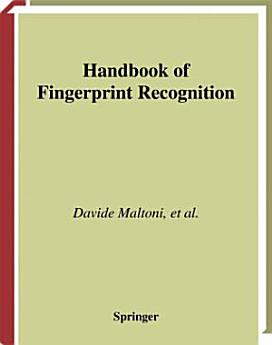Handbook of Fingerprint Recognition
2006年4月 · Springer Science & Business Media
5.0star
1 則評論report
電子書
351
頁數
report評分和評論未經驗證 瞭解詳情
關於這本電子書
Overview Biometric recognition refers to the use of distinctive physiological and behavioral character- tics (e. g. , fingerprints, face, hang geometry, iris, gait, signature), called biometric identifiers or simply biometrics, for automatically recognizing a person. Questions such as “Is this person authorized to enter the facility?”, “Is this individual entitled to access the privileged infor- tion?”, and “Did this person previously apply for a job?” are routinely asked in a variety of organizations in both public and private sectors. Because biometric identifiers cannot be easily misplaced, forged, or shared, they are considered more reliable for person recognition than traditional token- (e. g. , keys) or knowledge- (e. g. , password) based methods. Biometric recognition can provide better security, higher efficiency, and increased user convenience. It is for these reasons that biometric systems are being either increasingly deployed or evaluated in a large number of government (e. g. , welfare disbursement, national ID card, issuing of driver’s license) and civilian (e. g. , computer network logon, automatic teller machine, cellular phone, Web access, smartcard) applications. A number of biometric technologies have been developed and several of them are being used in a variety of applications. Among these, fingerprints, face, iris, speech, and hand - ometry are the ones that are most commonly used. Each biometric has its strengths and we- nesses and the choice of a particular biometric typically depends on the requirements of an application.
評分和評論
5.0
1 則評論
為這本電子書評分
請分享你的寶貴意見。
閱讀資訊
智能手機和平板電腦
手提電腦和電腦
你可以使用電腦的網絡瀏覽器聆聽在 Google Play 上購買的有聲書。
電子書閱讀器及其他裝置
如要在 Kobo 等電子墨水裝置上閱覽書籍,你需要下載檔案並傳輸到你的裝置。請按照說明中心的詳細指示,將檔案傳輸到支援的電子書閱讀器。





